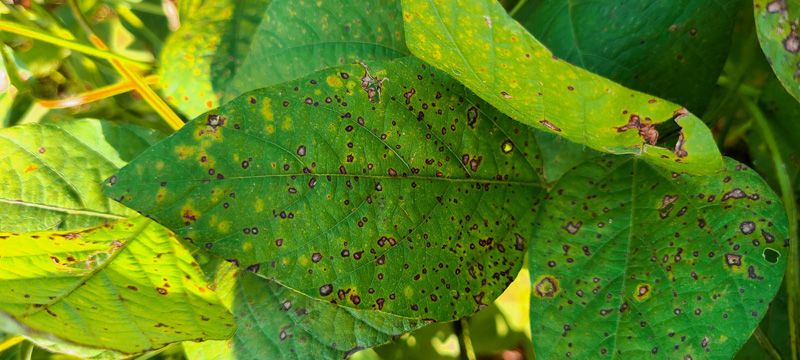
Leaf Spots – Bacterial
Leaf Spots – Bacterial– plant disease
Common name
Leaf spots
Bacterial leaf spots
Scab
Leaf blotch
Shot hole
Causal agent
It is a bacterial disease commonly caused by members of the genus Pseudomonas and Xanthomonas. Bacterial leaf spots caused by Pseudomonas are characterized by reddish-brown spots that distort the leaves. Conversely, those caused by Xanthomonas are circular with a yellow halo around them.
Scientific name
Symptoms & Signs
Leaf spots caused by bacteria appear as circular, necrotic areas surrounded by a yellow halo on the leaves of different plants. The lesions can vary in shape and size depending on the bacterial species. They reduce the ability of the plant to carry out photosynthesis, thus weakening the entire plant. The necrotic areas present as water-soaked lesions, usually on older leaves. As the disease progresses, the infected lesions turn dark and may produce creamy-white exudate that oozes from the underside of the leaves. In some leaves, the center of the leaf spot dries up and falls out, giving it a shothole appearance. The flowers, shoots, and buds can also turn black and blighted. Infected trees and shrubs may also show premature leaf drop as well.
Transmission
Rainwater, animals, insects, and transplant of an infected plant can transmit the disease to other healthy plants. The bacteria is present in soil, seed, and debris and enters other plants through open wounds, scars, and natural plant openings like stomata. Warm, moist, and humid weather conditions exacerbate the spread of infection.
Time of concern
Early spring to late summer
Common hosts
Cucumber plant
Pepper plant
Bean
Cotton
Lilac
